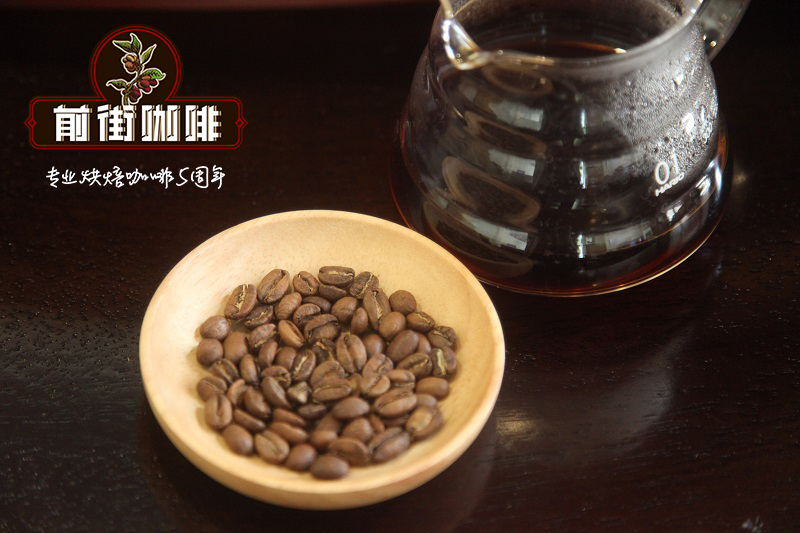What's with the Italian blend? Why mix coffee beans? with coffee beans, okay?

Professional coffee knowledge exchange more coffee bean information please follow the coffee workshop (Wechat official account cafe_style)
Mixed coffee is also called blended coffee beans.
Roasters understand the characteristics of each kind of coffee beans and mix them artistically to create a desired new flavor. The knowledge of roasters mixing coffee beans can be said to be the highest industry secret.
Nowadays, almost all of the popular Italian coffee belongs to the category of blended coffee beans. We generally refer to two or more different varieties of coffee or the same variety of coffee but roast different degrees of coffee mixed together as blended coffee beans. Blending coffee beans is by no means a simple addition, but hopes that through the unique understanding of coffee flavor, different coffee beans can learn from each other and blend with coffee beans with excellent flavor.
What is the purpose of mixing coffee and beans?
The blending of coffee beans is generally made of three or more different varieties of coffee, which are mixed into another coffee with unique flavor according to its sour, bitter, sweet, fragrant and alcoholic.
Blending coffee beans after the completion of the fragrance, smooth and refreshing, golden color, is the top grade of coffee. Mixed coffee drinks are very random, so they seek individual colors.
People mix coffee beans mainly for the following purposes:
A stable flavor
Because coffee beans are a kind of crop, the flavor of even the same kind of coffee beans will be different from year to year, so mixing several kinds of coffee beans can solve this problem and keep the taste basically the same every year.
Balanced taste
Because one of the features of the Italian coffee machine is that it magnifies the most prominent flavor feature of coffee beans, we almost never use a single variety of coffee to make Espresso, otherwise if that coffee bean is more
Bitter, then make the Espresso will be extremely bitter, partial acid will be very sour. So we need to balance the flavors by matching them.
Reduce the cost
In fact, the cost reduction is due to the fact that coffee production is often reduced due to natural and man-made disasters. At that time, since it is matched, it is only necessary to find a coffee bean with similar taste to replace the corresponding coffee bean in the recipe. There is no need to pay a lot of money to snap up coffee beans that have increased prices as a result of reduced production. But after arriving in China, we creatively appeared coffee blends such as Blue Mountain flavor, which means that we can't drink the real Blue Mountain, so we drink Blue Mountain-flavored coffee. Anyway, no one knows what Blue Mountain coffee tastes like. A good recipe can create a coffee legend, such as ILLY and LAVAZA, which our Chinese people are familiar with. We hope that there will be a blend of coffee with Chinese characteristics that is really in line with Chinese taste as soon as possible, instead of mixing low-quality coffee beans after deep roasting just for the sake of low cost.
According to the type of coffee, the blended coffee beans will have different characteristics in taste.
In order to actually use these combinations, we must first understand the flavor of dozens of individual coffees, and each coffee shop will spell out different proportions of coffee beans according to its own characteristics. Here are several representative mixing proportions. Of course, you can also challenge yourself to try to find the proportion you like.
I. sour espresso blending: 30% in Colombia, 60% in Brazil, 10% in Guatemala
Second, the general mixed coffee blending method: Colombia 30%, Brazil 60%, Robusta 10%.
Third, bitterness mixed commercial coffee blending method: Colombia 30%, Brazil 30%, Kilimanjaro 30%, Robusta 10%.
There are two spellings of coffee beans: first bake and then mix and then bake, also known as cooked and cooked, which is a greater test for bakers; the mixed beans are raised for a few more days in order to make the beans blend in character and have a balanced flavor; cooked beans usually take a week or so; raw and mixed beans can be used in 3-4 days, because different beans are already affecting each other during baking.
When mixing coffee, you can first learn about three very preliminary coffee bean mixing methods.
First, first determine the basic coffee beans to be used when mixing, use this coffee bean as the center, and further choose other kinds rich in personality to reconcile the overall flavor.
Second, you can try to combine coffee beans of the opposite nature, which can add a more special aroma of coffee.
Third, combine beans with similar properties and integrate them, and then further select beans rich in various flavors to add special aroma to the whole coffee.
Important Notice :
前街咖啡 FrontStreet Coffee has moved to new addredd:
FrontStreet Coffee Address: 315,Donghua East Road,GuangZhou
Tel:020 38364473
- Prev

Why mix coffee beans? What are the taste characteristics of blended coffee? What brand of coffee is good?
Professional coffee knowledge exchange more coffee bean information please follow the coffee workshop (Wechat official account cafe_style) Why mix coffee beans? The purpose of mixing coffee beans is to combine the sour, bitter and mellow taste of coffee beans perfectly. The bitter taste is transformed into sweet taste, the sour taste is soft, the taste is slightly wild, and the sweet taste is prominent. Different from coffee beans from a single product of origin.
- Next

Which is better, a single product or a mixed coffee? Oh, what's the difference? Is it all right to mix coffee and beans by hand?
Professional coffee knowledge exchange more coffee bean information please pay attention to the coffee workshop (Wechat official account cafe_style) coffee beans can also be divided into individual beans and blended coffee beans, some friends may not understand the difference between the two, let's have a look! [single coffee beans] as the name implies, single coffee beans are produced in the same producing area, or on the same plantation or village.
Related
- Guji coffee producing area of Guji, Ethiopia: Humbela, Shakiso, Wulaga
- What is the most expensive variety of Qiloso in BOP multi-variety group?
- How to store the coffee beans bought home?
- Why are Yemeni coffee beans so rare now?
- Ethiopian Sidamo all Red Fruit Sun Sun Santa Vini Coffee beans
- SOE is mostly sour? What does it mean? Is it a single bean? what's the difference between it and Italian blending?
- Is Italian coffee beans suitable for making hand-brewed coffee?
- How to choose coffee beans when making cold coffee? What kind of coffee beans are suitable for making cold coffee?
- Just entered the pit to make coffee, what kind of coffee beans should be chosen?
- Can only Japan buy real Blue Mountain Coffee? What are authentic Jamaican Blue Mountain coffee beans?

